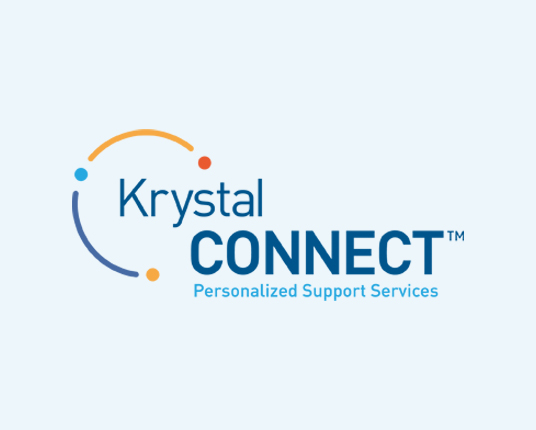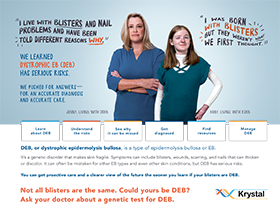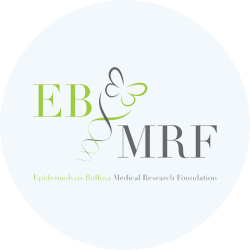Resources and support for Dystrophic Epidermolyis Bullosa (DEB)
Krystal Biotech can provide more information on DEB
Connect with us
Sign up to connect with Krystal Biotech for more information about DEB or call us at 1-844-5-KRYSTAL.Your patients can get personalized support through Krystal Connect by calling 1‑844‑5‑KRYSTAL
Krystal Connect help raise awareness of DEB and can help patients and their families learn more about DEB by:
- Providing educational opportunities via one-on-one, family, or group meetings
- Providing education about family trees, genetic inheritance, and genetic testing for patients or family members
- Connecting patients with helpful tools and resources about DEB
Contact Krystal Connect at 1‑844‑5‑KRYSTAL.

Patient Brochure
Information for patients about DEB and its risks, plus how to get an accurate diagnosis and manage the disease.

Support and advocacy
Patient advocacy and organizations
There are a number of organizations that provide support to individuals and families living with DEB. Here are some that might be a fit for your patients:
Understanding DEB
DEB is a serious genetic disorder caused by mutations in the COL7A1 gene1,2
References: 1. Fortuna G, Aria M, Cepeda-Valdes R, Trevino MGM, Salas-Alanís JC. Pain in patients with dystrophic epidermolysis bullosa: association with anxiety and depression. Psychiatry Investig. 2017;14(6):746-753. doi:10.4306/pi.2017.14.6.746 2. Eichstadt S, Tang JY, Solis DC, et al. From clinical phenotype to genotypic modelling: incidence and prevalence of recessive dystrophic epidermolysis bullosa (RDEB). Clin Cosmet Investig Dermatol. 2019;12:933-942. doi:10.2147/CCID.S232547 3. Has C, Liu L, Bolling MC, et al. Clinical practice guidelines for laboratory diagnosis of epidermolysis bullosa. Br J Dermatol. 2020;182(3):574-592. doi:10.1111/bjd.18128 4. Kao C-H, Chen S-J, Hwang B, Yang A-H, Hsu C-Y, Huang C-H. Junctional epidermolysis bullosa. J Chin Med Assoc. 2006;69(10):503-506. doi:10.1016/S1726-4901(09)70318-1 5. Tabor A, Pergolizzi JV Jr, Marti G, Harmon J, Cohen B, Lequang JA. Raising awareness among healthcare providers about epidermolysis bullosa and advancing toward a cure. J Clin Aesthet Dermatol. 2017;10(5):36-48. 6. Bruckner AL, Losow M, Wisk J, et al. The challenges of living with and managing epidermolysis bullosa: insights from patients and caregivers. Orphanet J Rare Dis. 2020;15(1):1. doi:10.1186/s13023-019-1279-y







